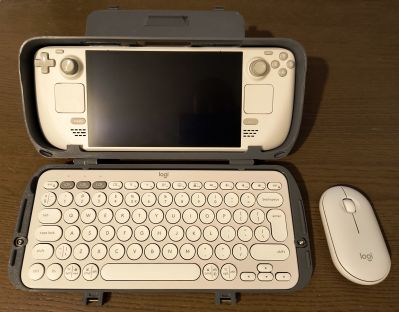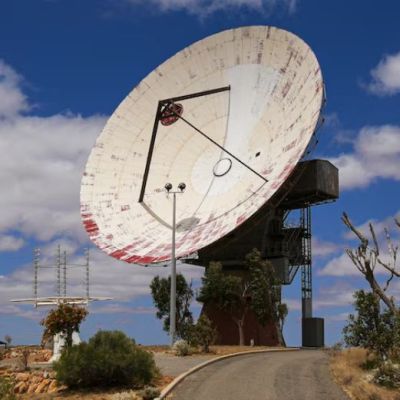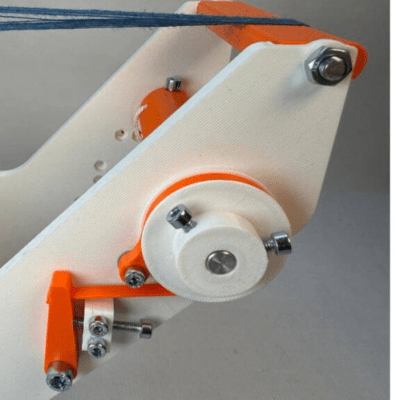DIY portable computing takes many forms, and doesn’t always require getting down and dirty with custom electronics. [Justinas Jakubovskis]’s Steam Deck Play and Work case demonstrates this with some really smart design features.
 It’s primarily a carrying case for Valve’s Steam Deck portable PC gaming console, but the unit also acts as a fold-out workstation with keyboard. Add a wireless mouse to the mix and one can use it much like a mini laptop, or just pull the Steam Deck out and use it in the usual way.
It’s primarily a carrying case for Valve’s Steam Deck portable PC gaming console, but the unit also acts as a fold-out workstation with keyboard. Add a wireless mouse to the mix and one can use it much like a mini laptop, or just pull the Steam Deck out and use it in the usual way.
The case is 3D printed and while the model isn’t free (links are in the video description) some of the design features are worth keeping in mind even if you’re not buying. The top clasp, for example, doubles as a cover for the buttons and exhaust vents and the kickstand at the rear covers the cooling intake when closed, and exposes it when deployed. We also really like the use of thick fabric tape lining the inside of the case to support and cushion the Steam Deck itself; it’s an effective and adjustable way to provide a soft place for something to sit.
The case is intended to fit a specific model of keyboard, in this case the Pebble Keys 2 K380s (also available as a combo with a mouse). But if you want to roll your own Steam Deck keyboard and aren’t afraid of some low-level work, check out the Keysheet. Or go deeper and get some guidance on modding the Steam Deck itself.
Continue reading “Custom Case Turns Steam Deck Into Portable Workstation”



















